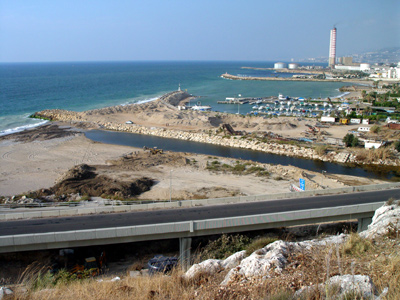
The Nahr el–Kalb is a river that begins in the Jeita Grotto. It is located about 6 mi. [10 km.] north of Beirut. It flows from east to west into the Mediterranean Sea and it is bounded on the north and the south by very steep slopes—in some places cliffs. The southern cliff juts out to reach the shore of the Mediterranean Sea and armies marching along the coast have always have had difficulty crossing the river and transversing the narrow path that leads across the southern ridge/cliff.
After victories and successful crossings, the armies often carved inscriptions in the wall of the southern cliff to commemorate these events. There are seventeen ancient inscriptions as well as a number of modern ones. The ancient ones are designated by Roman numerals.
The oldest inscription dates back to the days of the Egyptian ruler Rameses II (1279–1212 B.C.).
Name: “Nahr el–Kalb” is Arabic for “the river of the Dog/Wolf.” In ancient times it was called the “Lycus River” (= “River of the Wolf”). There is a tradition that a wolf guarded the river and pass, and would howl when enemies approached!
It was reported that in 1942 the Australians who were building a railway in the area found a statue of a wolf—but this has not been confirmed.